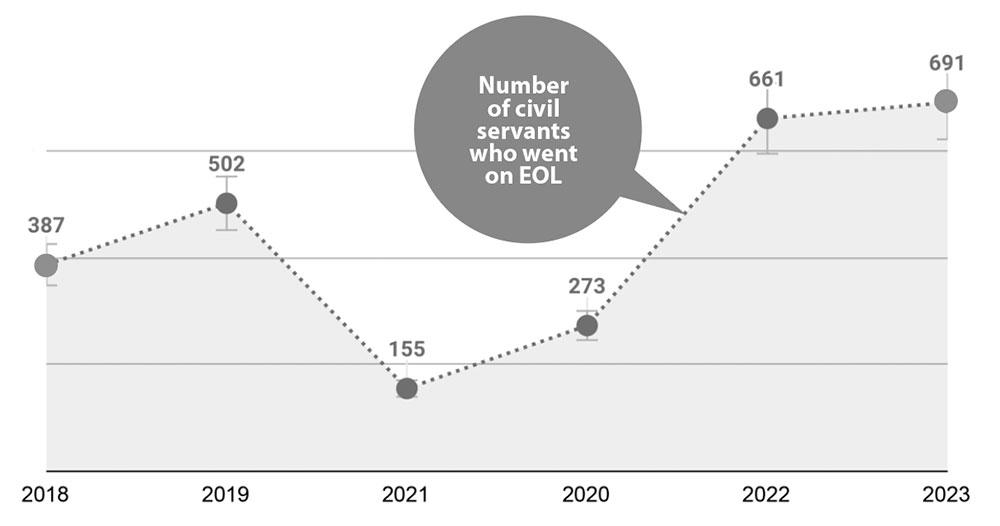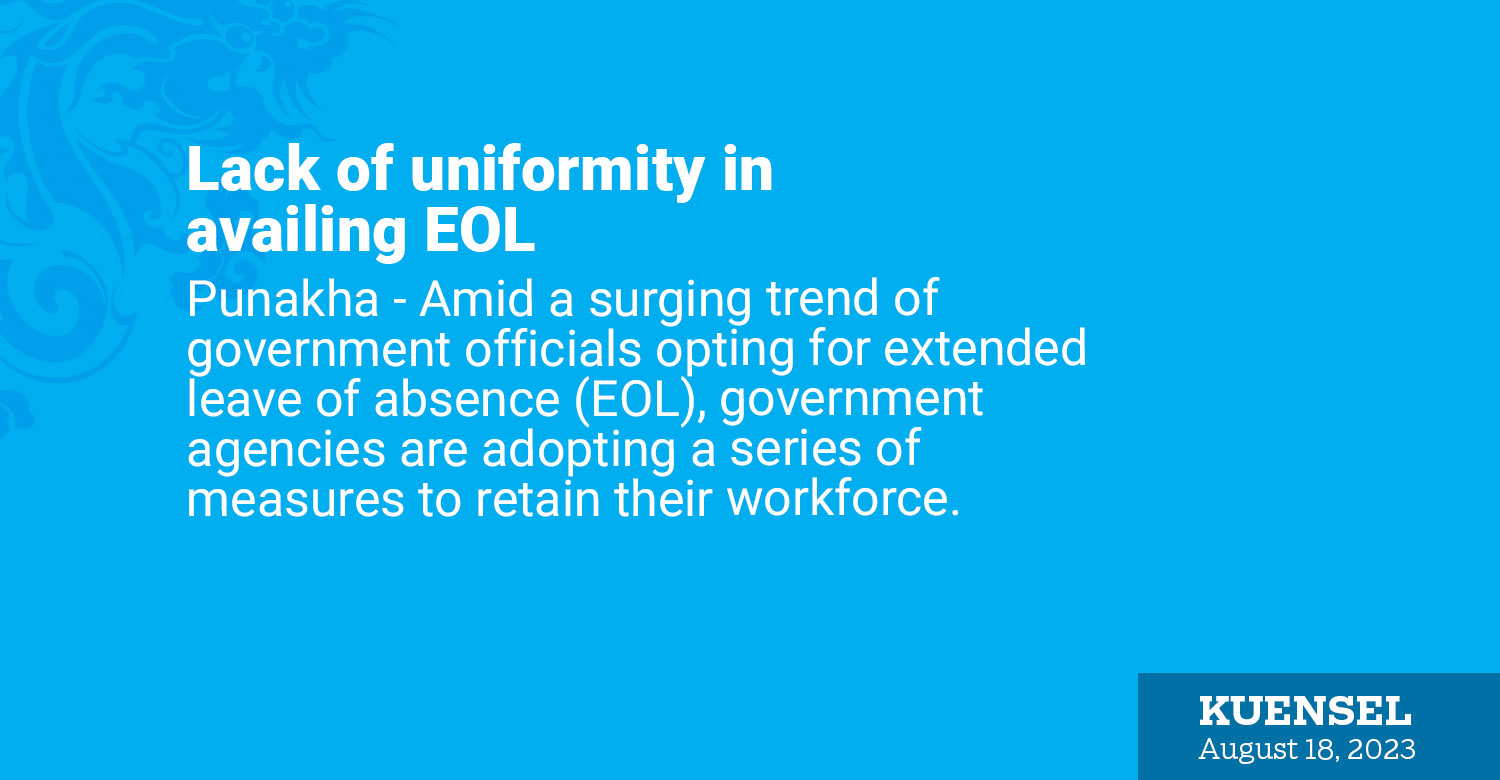Chencho Dema
Punakha – Amid a surging trend of government officials opting for extended leave of absence (EOL), government agencies are adopting a series of measures to retain their workforce.
This move comes as the number of civil servants seeking EOL for pursuits like further education,international travel with educational purposes, immigration, and personal reasons is on the rise.
Data from the Royal Civil Service Commission reveals a marked increase in civil servants availing EOL this year, with 691 individuals taking leave as compared to 661 last year.
This notable rise in EOL applications encompasses various job categories, including eight managers, 966 professional and managerial staff, 362 supervisory/support staff, and 16 operational staff.

The trend further underscores the increasing popularity of EOL among civil servants. In 2019, the number stood at 502, followed by 387 in 2018, 273 in 2020, and a comparatively modest 155 in 2021.
Over the last six years, an aggregate of 2,669 civil servants have opted for EOL, highlighting its significance as an option for diverse personal and professional pursuits.
However, the process of obtaining EOL appears to be marked by inconsistencies. While some employees secure EOL within a short timeframe, others must notify their employers months in advance.
Furthermore, the terms and conditions for availing EOL also vary across agencies, leading to disparities in granting leave and potential resignations in some instances.
These guidelines emphasise a need for uniformity and consistent regulations across government departments.
Several civil servants who shared their perspectives with Kuensel stressed the importance of uniformity in EOL regulations.
One anonymous civil servant noted, “I assumed all government departments had the same rules when applying for EOL, but it seems it is not. I believe that the RCSC should have uniform EOL rules rather than varying rules from various agencies. We are all governed by RCSC, after all.”
Another highlighted the disparity in treatment, saying, “Some are able to go on EOL without any terms and conditions, while some have to either resign or you are not allowed only.”
An RCSC official justified agency-specific regulations, citing the need for tailored internal leave policies that ensure efficient employee management and minimal disruption to service delivery.
The official noted that EOL for civil servants in P1 to O4 positions is subject to the approval of the respective HR Committees of the Agencies.
While the civil service aims to provide a range of leave options to maintain work-life balance, regulations surrounding EOL are not standardized.
According to an RCSC official, leave is not a guaranteed right for civil servants, except in cases of maternity, paternity, bereavement, and unforeseen dire circumstances.
EOL remains a notable leave option for civil servants, offering an opportunity to address family or personal issues and gain diverse experiences outside the Civil Service.
Notably, the exact count of EOL applications is established only upon their approval by respective agencies and system updates.
EOL stands as a vital facility for career civil servants, allowing sabbaticals of up to 24 months in their lengthy service.
With a current total of 29,241 civil servants as of June 30, 2023, the evolving landscape of leave policies continues to play a pivotal role in maintaining a dynamic and engaged government workforce.


